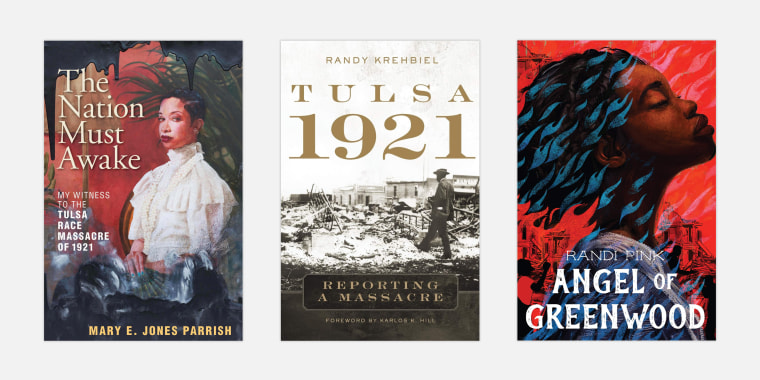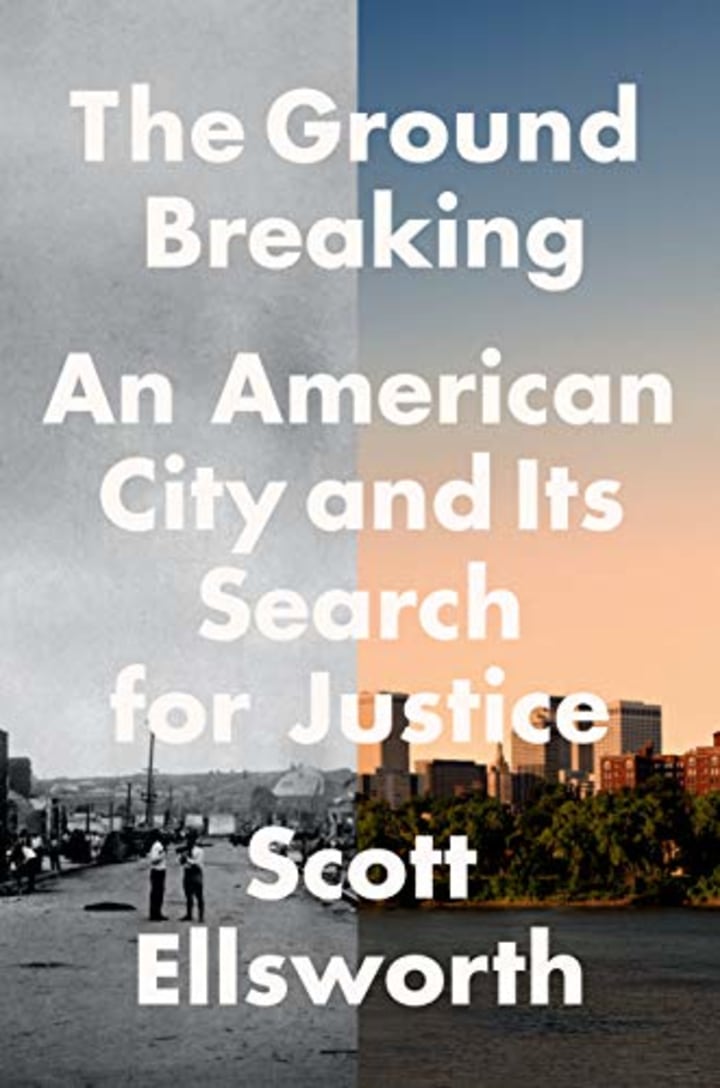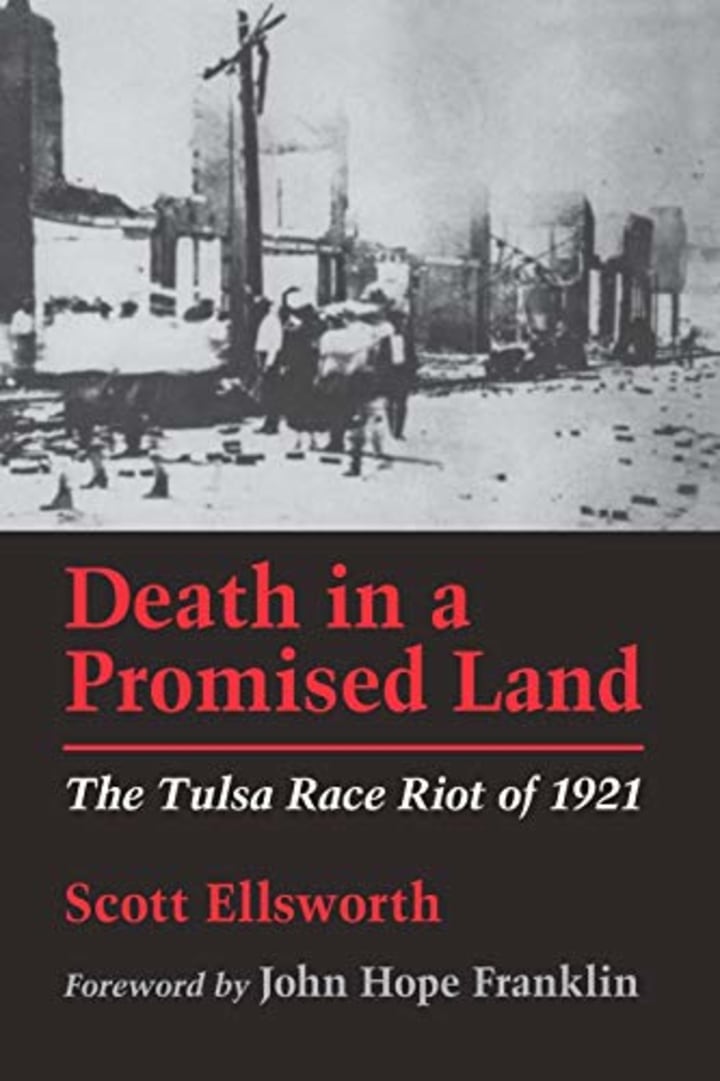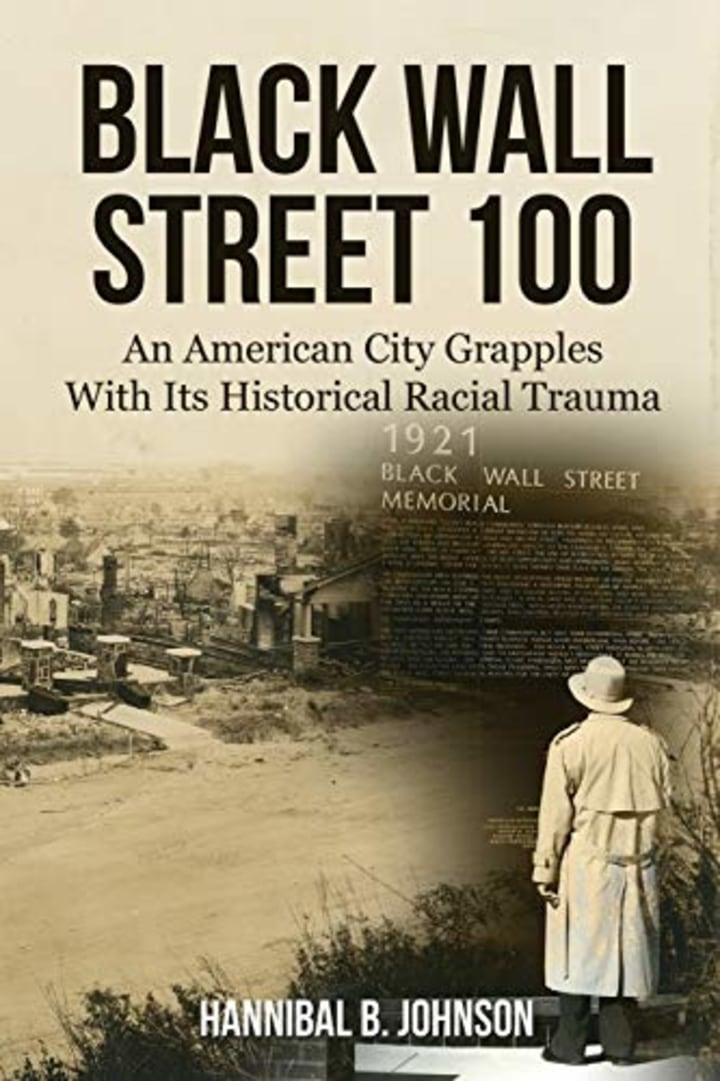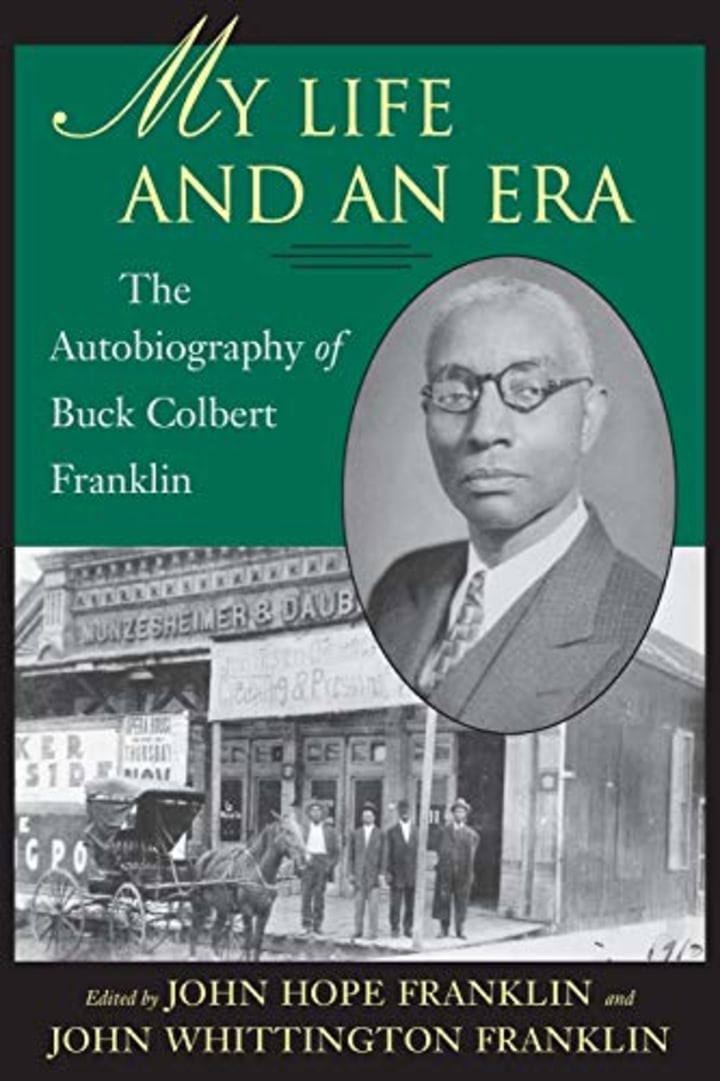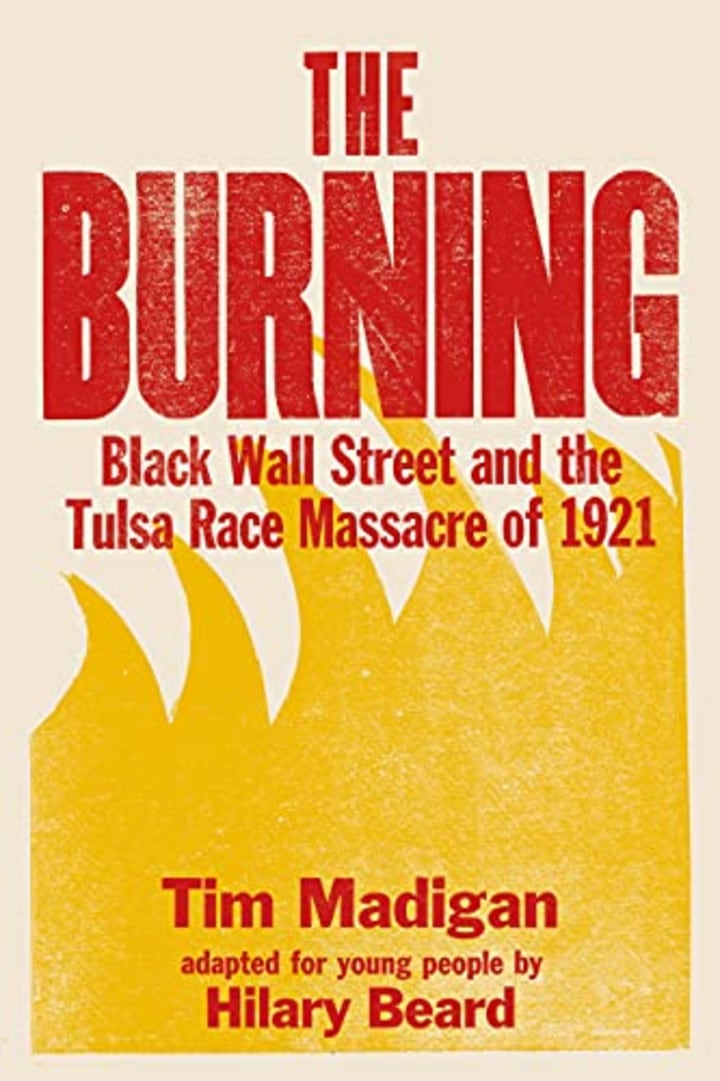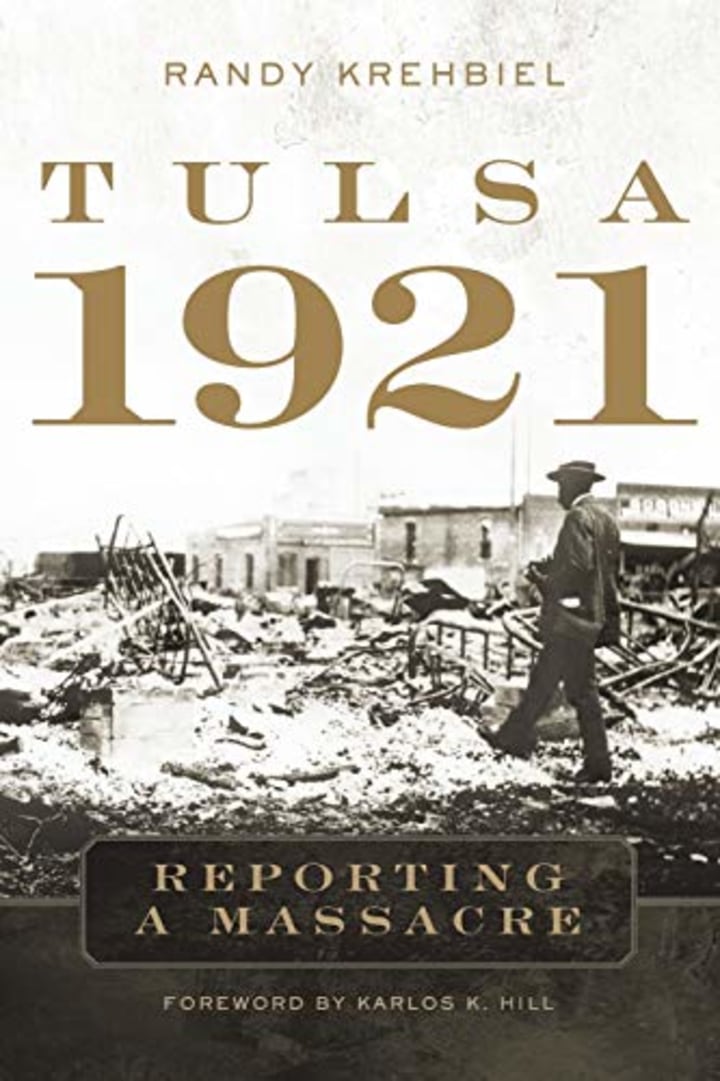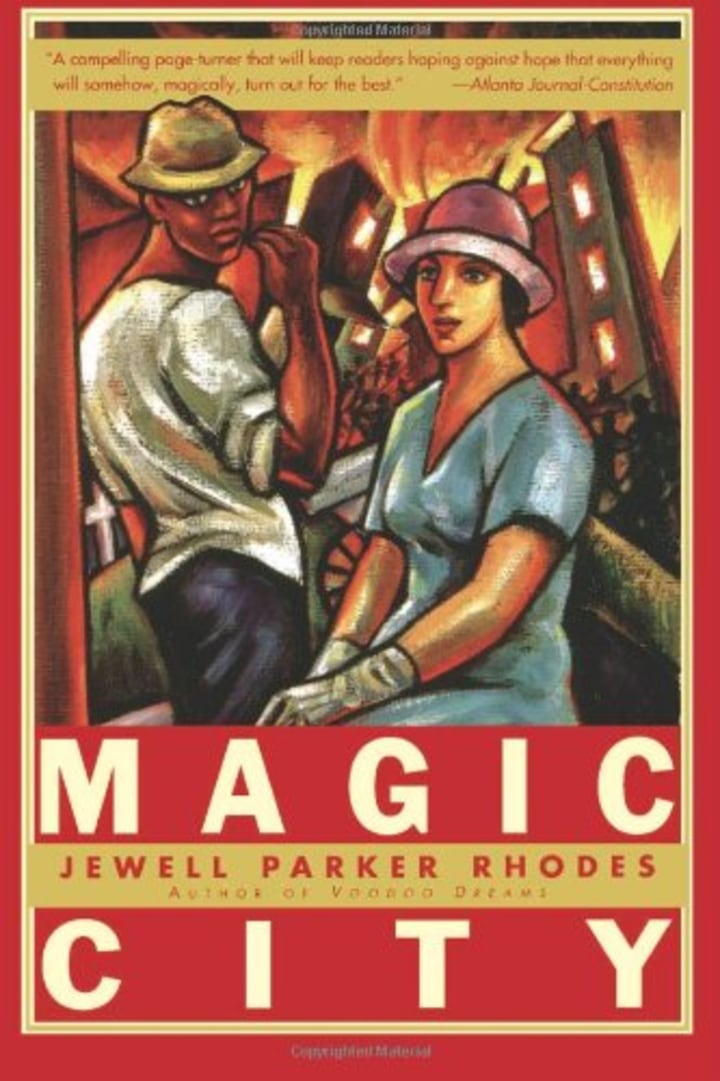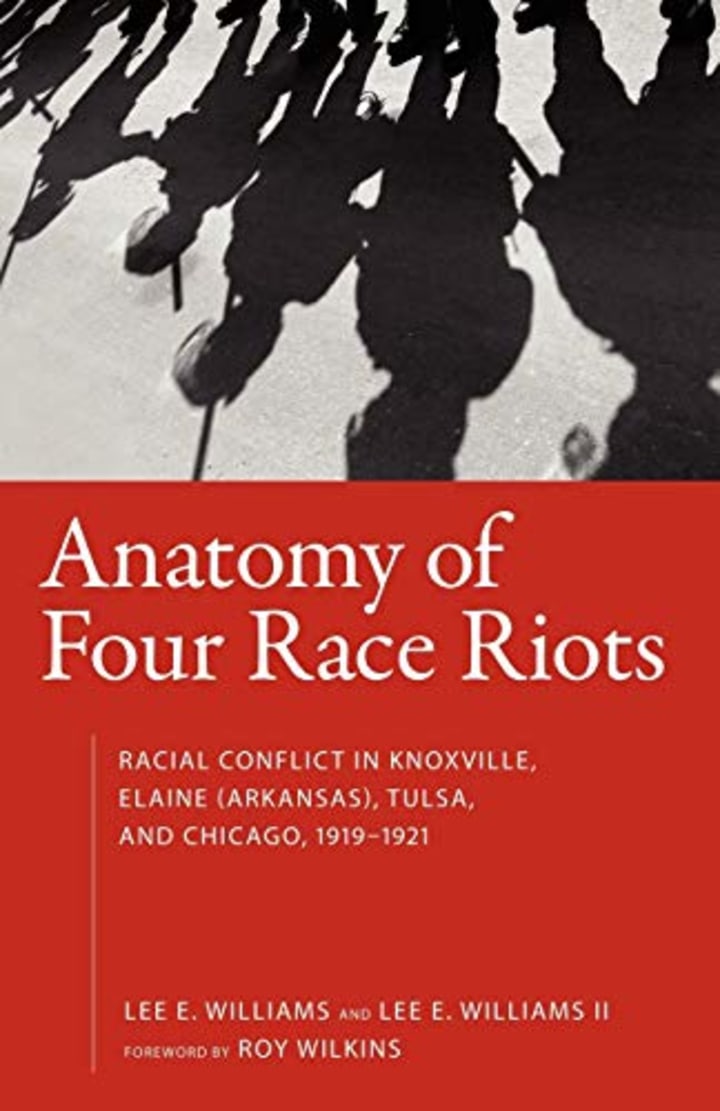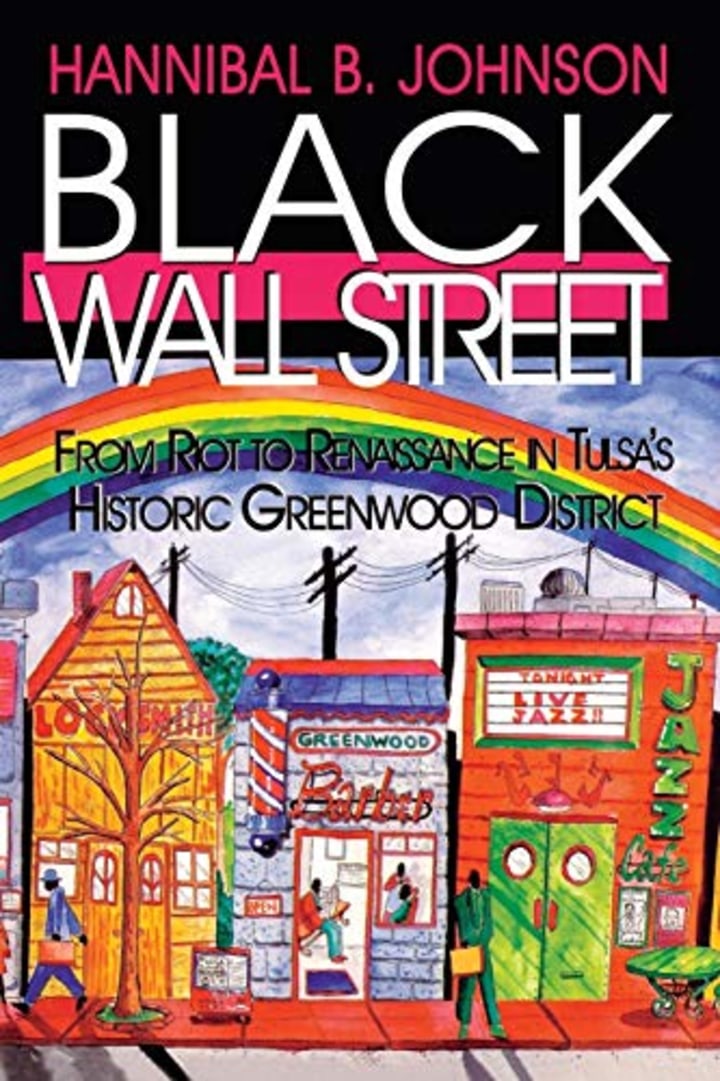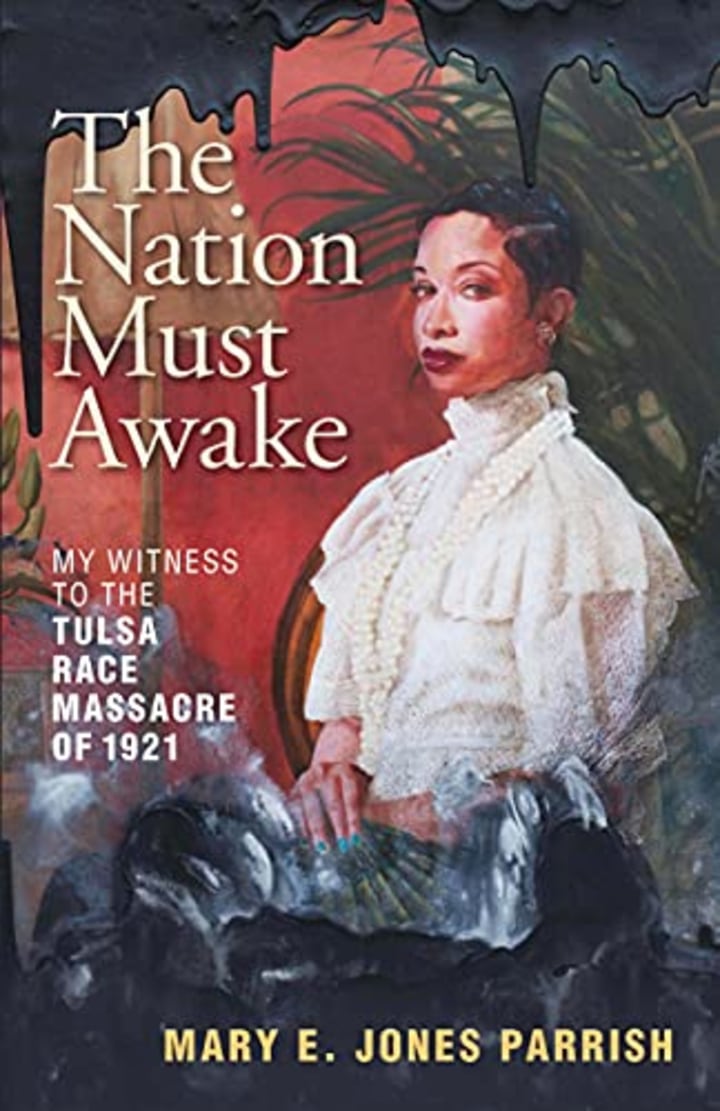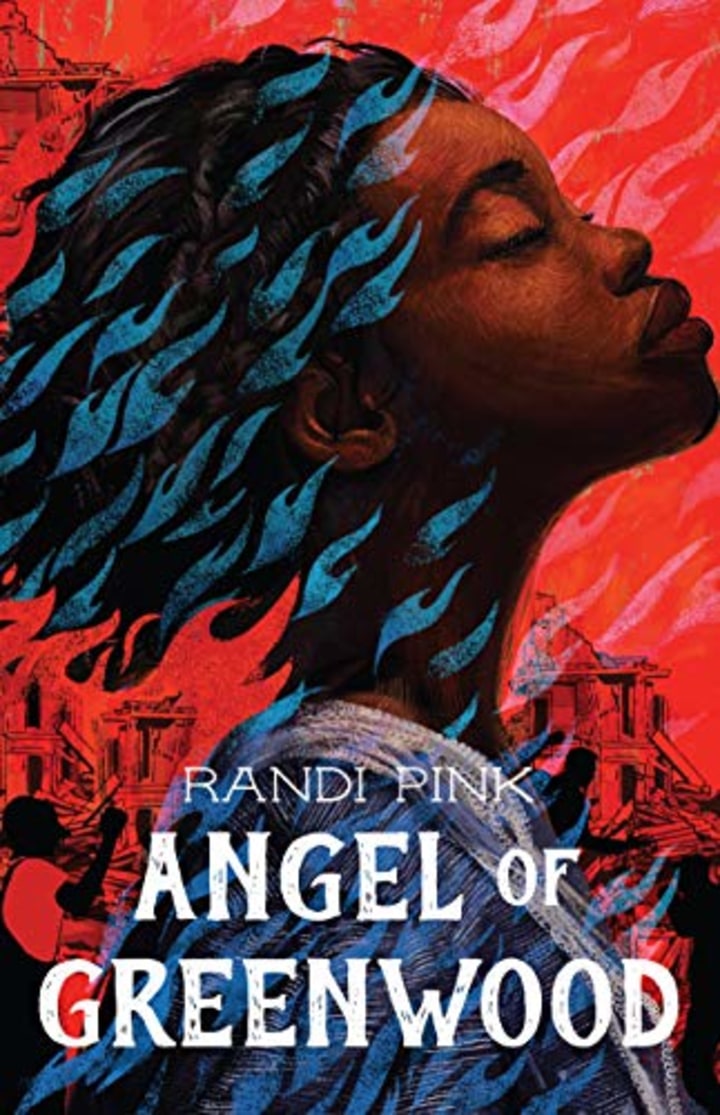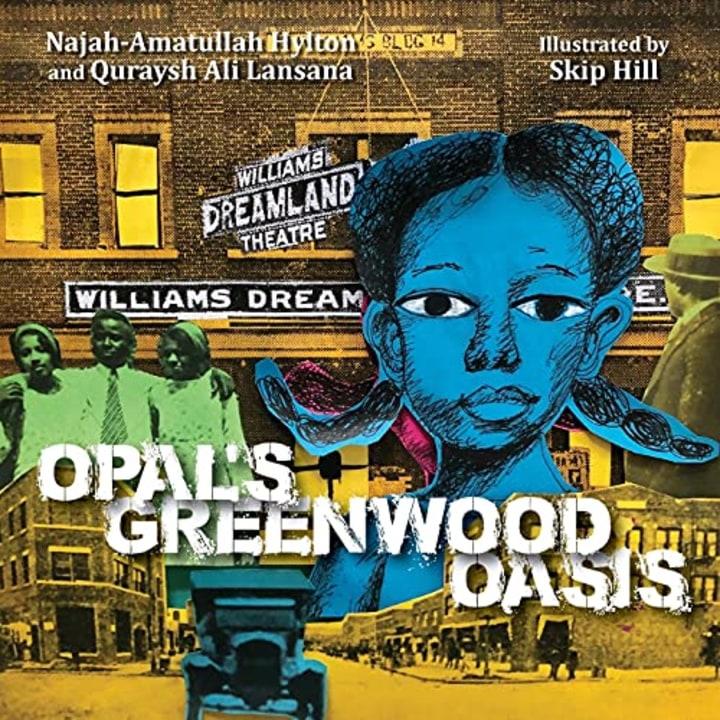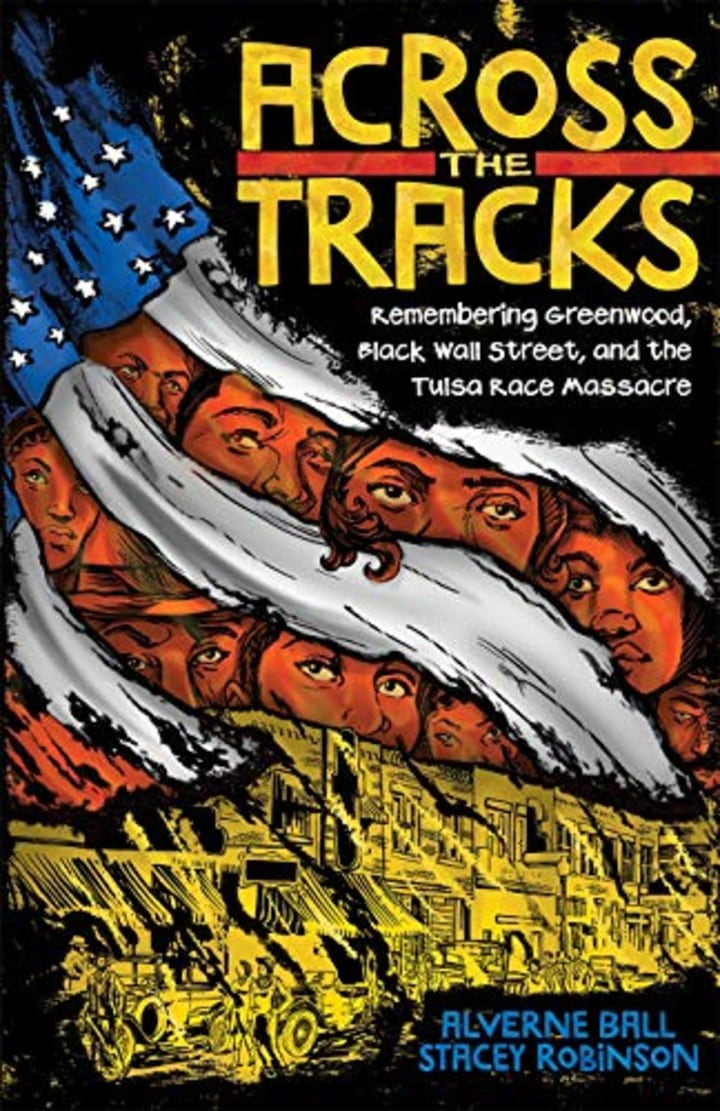Growing up in Tulsa, Oklahoma, 67-year-old historian Scott Ellsworth remembers people treating the Tulsa Race Massacre like a shameful secret.
“I would occasionally overhear stories from adults — maybe neighbors or something — discussing the massacre,” explained Ellsworth, author of the recently released “The Ground Breaking,” which examines the massacre and its aftermath. “But then when you’d walk into the room, they’d change the subject or lower their voices.”
One hundred years ago on May 31, 1921, and into the next day, a white mob destroyed Tulsa’s burgeoning Greenwood District, known as the “Black Wall Street,” in what experts call the single-most horrific incident of racial terrorism since slavery — here’s why the Tulsa Race Massacre is still relevant today. And despite this devastation and loss, the story of Greenwood and the massacre is largely unknown among most Americans.
“The one thing that still happens is people say, ‘Why haven't I heard about this before?’” noted Ellsworth, whose 1982 book “Death in a Promised Land” is considered a groundbreaking work on the massacre. To answer that question, we asked Ellsworth and fellow historian Hannibal B. Johnson to lead us through some of the most common misconceptions about this pivotal moment in American history and what lessons we can carry forward today. Throughout, we’ve added noteworthy books for further reading on various topics, as well.
‘The Ground Breaking: The Tulsa Race Massacre and an American City's Search for Justice’ by Scott Ellsworth
‘Death in a Promised Land: The Tulsa Race Riot of 1921’ by Scott Ellsworth
Wealth and poverty in ‘Black Wall Street’
Tulsa’s Greenwood district was known as “Black Wall Street” because it was home to a thriving community of entrepreneurs, artists and working professionals who lived alongside service and domestic workers.
While there were well-to-do Greenwood residents, “the wealth in Greenwood has gotten a bit exaggerated,” said Ellsworth. “There were certainly wealthy people — Black people — there, but they were a small minority of the folks that were there.” Greenwood’s mansions and elegant homes were not far from “very simple wooden homes without electricity or running water,” said Ellsworth. Many of those smaller dwellings housed cooks, maids, chauffeurs and others who worked for white Tulsans.
‘Black Wall Street 100: An American City Grapples With Its Historical Racial Trauma’ by Hannibal Johnson
At the time, a significant portion of Greenwood’s population consisted of “a conglomeration of Black businessmen and women who plied their trade in a segregated community,” explained author and attorney Hannibal Johnson. “There were theaters, dance halls, pool halls, hotels and restaurants, as well as professionals like doctors, lawyers, dentists and accountants.”
‘My Life And An Era’ by Buck Colbert Franklin
Among them was attorney Buck Franklin, a survivor of the massacre who would go on to represent other Greenwood families in court. His memoir “My Life and An Era” includes his first hand account of the massacre and the growing tensions in Tulsa in the years leading up to World War II.
Did two teens in an elevator trigger a massacre?
Dick Rowland, a 19-year-old Black shoe shiner, attempted to enter an elevator at the Drexel Building on South Main Street in Tulsa the day before the massacre. A few moments later, 17-year-old elevator operator Sarah Page screamed.
“We think what happened was that as he walked onto the elevator, he tripped,” said Ellsworth, noting that particulars are still unclear a century later. As Rowland tried to break his fall with his hands, he may have grabbed Sarah Page’s arm. “She was startled so she screamed and he ran out of the elevator and out of the building.”
The police were called but “they didn’t seem to be particularly worried” that a crime had been committed, said Ellsworth, adding it’s doubtful that Rowland attacked Page: The two probably knew each other by sight. Because Rowland and many other Black teenagers worked as shoe shiners or at white-owned and white-patronized businesses, there were no bathroom facilities available to Black employees. “So the white owner of the shoe shine parlor arranged for his shoe shiners to walk down the block to the Drexel building and to ride the elevator to the top floor where there was a ‘colored’ restroom,” said Ellsworth. “So this was something all of them would probably do once a day.”
‘The Burning: Black Wall Street and the Tulsa Race Massacre of 1921’ by Tim Madigan , adopted for young readers by Hilary Beard
Ellsworth recalled interviewing massacre survivor Robert Fairchild, who worked alongside Rowland as a shoe shiner, in 1978. “He told me that there was no way that Rowland would have ever attacked Sarah Page,” Ellsworth said. Fairchild also debunked the persistent myth that Rowland and Page were romantically involved, said Ellsworth. “He said that that's not true and it wouldn't have happened.”
Did a white-owned newspaper instigate the violence?
The Tulsa Tribune, a white-owned newspaper in the city, immediately ran with the idea that a Black man had tried to assault a white girl inside an elevator, even though there was little evidence this had occurred, according to Ellsworth.
‘Tulsa, 1921: Reporting a Massacre’ by Randi Krehbiel
An inflammatory front page article accused Rowland of identifying himself as ‘Diamond Dick’ to police — it also claimed he had stalked Page, in addition to tearing her clothes and scratching her face.
“There was no question that the article presented it as him trying to rape her,” said Ellsworth. Given no record of the editorial has survived, witnesses have reported that the Tribune’s editorial page was designed to incite readers to violence, featuring a writeup titled “To Lynch Negro Tonight.”
The effect of those words was immediate. “As soon as the Tribune hit the streets, within a half hour, there was lynch talk on the streets of Tulsa,” said Ellsworth. “What happens after that is a lynch mob then gathered and then things start to happen very quickly.”
How did Sarah Page feel about Dick Rowland’s arrest?
Sarah Page “would never press charges against Dick,” further indicating an accident more than anything else, Ellsworth noted.
“There was a white store clerk in the Drexel building who heard the scream and saw Dick running out of the elevator,” he explained. “He then decided that Dick must have tried to assault her.”
'Magic City' by Jewell Parker Rhodes
Author Jewell Parker Rhodes was so struck by Page’s story and her steadfast refusal to press charges or say she was harmed that she was inspired to write her 1997 novel “Magic City,” which was re-released earlier this year.
Did World War I heroes try to protect Dick Rowland?
The mere fact that Black veterans returned from World War I as decorated heroes stirred up particular and virulent anger among Tulsa’s white population.
“The psychological dynamic of the era was that you had Black men who would have risked their lives for the country,” said Hannibal Johnson. “And in many cases they were treated much better on foreign soil.”
‘Anatomy of Four Race Riots’ by Lee Williams and Lee Williams II
As word of a lynch mob heading to the Tulsa courthouse to murder Rowland spread, a group of 25 Black armed veterans set up to protect his life.
“There's a Black vet that jumps up onto the stage at the Dreamland Theater and says, ‘Shut this place down. We ain't gonna let this happen here. There is not going to be a lynching,’” said Ellsworth, adding it is unlikely that any of the veterans actually knew Rowland. “But they knew that a racial brother was in dire danger, and so they risked their lives and some of them gave their lives to protect him,” he explained.
As the situation began to escalate, a second group of 75 veterans headed to the courthouse. “That enraged the whites,” added Ellsworth. “And that’s when the massacre began.”
How many Black Americans were murdered?
As the white mob in Greenwood grew, the violence that followed was so horrific and traumatizing that many Black survivors never spoke of it to their children. Many Black Tulsans wanted to spare their children the trauma of what had occurred. “There was anxiety about burdening children with this torturous history,” Johnson explained.
‘Black Wall Street: From Riot to Renaissance in Tulsa's Historic Greenwood District’ By Hannibal Johnson
What is known is that 35 square blocks were burned down and destroyed and that many massacre survivors would flee the city in order to relocate elsewhere in the United States. Despite these catastrophic losses of life and property, no one was ever charged in relation to the murders or the destruction of homes and businesses based in Greenwood.
“We still don't know how many people died during the massacre,” said Ellsworth, noting that a mass grave for some of the victims was just discovered last October. “There's a lot of work that we're still doing.”
What happened to Dick Rowland and Sarah Page?
One of the biggest mysteries around the Tulsa Race Massacre revolves around the two teens in the middle of it.
“Both of them are sort of the great mysteries because they both just disappeared” after the massacre, said Ellsworth. Rowland’s charges were officially dropped in September 1921 and he is believed to have left Tulsa. “We think he went out to the Pacific Northwest, but we just don't know what happened to him. There is reason to believe he worked in a shipyard during World War II,” Ellsworth said. Historians have also spent considerable time trying to discover what happened to Sarah Page, but have never definitively done so.
Were records erased?
Almost immediately after Greenwood burned, efforts began at the highest levels to suppress what happened during the massacre, Johnson explained.
“When this massacre occurred, Tulsa was becoming the oil capital of the world,” he said. “It was trying to position itself as a cosmopolitan city.”
But the actions of white Tulsans during the massacre showed how false that image was. While some white Tulsans initially boasted of their role in the violence — some sold postcards depicting the destruction — everything soon disappeared as Tulsa officials realized the potential harm to the city’s reputation.
“The mayor and other politicians and the Chamber of Commerce and other people who ran the town realized that the massacre was this horrible public relations problem,” said Ellsworth. So they determined they’d “tamp it down.”
The editorial openly calling for lynching was torn out of the archives before the paper was transferred to microfilm in the 1930s.
“There's evidence that the police chief in the week after the massacre sent his officers to all the white photography studios in town to confiscate any riot photos and negatives,” said Ellsworth. This ensured any souvenir postcards would not be recreated. “So very quickly the riot stopped being mentioned in either of Tulsa's daily white newspapers. They haven't talked about it for nearly 50 years. They go out of their way to never mention it.”
‘The Nation Must Awake : My Witness to the Tulsa Race Massacre of 1921’ by Mary E. Jones Parrish
But many Black Tulsans did try to preserve the stories of what happened and the memories of those killed. Teacher Mary E. Jones Parrish saw the importance of preserving the recollections of massacre survivors and self-published her firsthand recollections of what she saw shortly afterward. The book was recently re-released.
As decades passed, there subsequently was a greater push to have official recognition of the violence that was inflicted on the Greenwood District. In 2001, the Oklahoma Commission to Study the Tulsa Race Riot of 1921 released a comprehensive report and in 2015 the 1921 Tulsa Race Massacre Centennial Commission was created in order to appropriately memorialize the 100th anniversary of the event, which is ongoing this year.
‘Angel of Greenwood’ by Randi Pink
Many novelists, artists and filmmakers have also in recent years begun to create both fictional accounts of what happened in order to make sure that younger generations of Americans know about the legacy of Greenwood. The lives of two Greenwood teens is fictionalized in the recent young adult novel “Angel of Greenwood.”
‘Opal’s Greenwood Oasis’ by Najah-amatullah Hylton (author), Quraysh Ali Lansana (author) and Skip Hill (illustrator)
The new picture book ‘Opal’s Greenwood Oasis’ highlights the vibrancy of the district through the eyes of a young child.
‘Across the Tracks: Remembering the Tulsa Race Massacre and Black Wall Street’ by Alverne Ball (author) and Stacey Robinson (Illustrator)
Graphic novel “Across the Tracks” details the neighborhood’s history, destruction and recovery.
Historians say the strength of Greenwood’s residents and their determination to rebuild both their neighborhood and their lives after the violence inflicted upon them by their neighbors should never be forgotten.
“Imagine how gutsy it was for these maids and cooks and dishwashers and chauffeurs to then a week later go into the white community, to their jobs,” said Ellsworth. “They don’t know if the people they’re seeing had just been shooting at them — the courage of those people is just amazing.”
